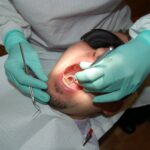
Globally caries is very common and while largely preventable is expensive to treat. Root caries is distinct from coronal caries because of structural differences in enamel, dentine and cementum, microbiology, critical pH for demineralisation, and histopathology of the carious lesions. Root caries is increasing in prevalence in ageing populations as more people retain their natural teeth. Detecting root caries is traditionally undertaken using a visual tactile approach. Diagnostic criteria include lesion texture, colour, location, surface contour, cavitation, and light reflectance. Detection as an early stage would enable the use of preventive interventions.
The aim of this Cochrane review was to assess the diagnostic test accuracy of index tests for the detection and diagnosis of root caries in adults, used alone or in combination with other tests.
Methods
Searches were conducted in the Medline, Embase, US National Institutes of Health Ongoing Trials Register ClinicalTrials.gov and World Health Organization International Clinical Trials Registry Platform databases. Two reviewers independently screened and selected studies extracting data in duplicate. The Quality Assessment of Diagnostic Accuracy Studies 2 (QUADAS-2) was used to assess the applicability and risk of bias. Diagnostic accuracy studies comparing one or more index tests (laser fluorescence, radiographs, visual examination, electronic caries monitor (ECM), transillumination), either independently or in combination, with a reference standard were considered. The threshold of interest was between sound root surfaces and those with either cavitated or non-cavitated root caries lesions. Estimates for sensitivity and specificity with 95% confidence intervals (CIs) for each study. The use of hierarchical models for data synthesis and explore potential sources of heterogeneity through meta-regression was planned.
Results
- 4 cross-sectional diagnostic test accuracy studies (8 datasets) analysing 4997 root surfaces were included.
- 2 in-vitro studies evaluated secondary root caries lesions on extracted teeth and 2 in-vivo studies evaluated primary root caries lesions within the oral cavity.
- Laser fluorescence was evaluated in 4 studies with reported estimates of sensitivity ranging from 0.50 to 0.81 and specificity from 0.40 to 0.80.
- 2 studies evaluated radiographs and reporting sensitivity estimates ranging from 0.40 to 0.63 and specificity ranging from 0.31 to 0.80.
- 1 study evaluating visual examination reported sensitivity of 0.75 (95%CI; 0.48 to 0.93) and specificity of 0.38 (95%CI; 0.14 to 0.68).
- 1 study evaluating radiograph and visual examination in combination reported sensitivity of 0.81 (95%CI; 0.54 to 0.96) and specificity of 0.54 (95%CI; 0.25 to 0.81).
- No data pooling was possible.
- All four studies to be considered to be at overall high risk of bias.
- The certainty of the evidence judged to be very low.
Conclusions
The authors concluded: –
Visual-tactile examination is the mainstay of root caries detection and diagnosis; however, due to the paucity of the evidence base and the very low certainty of the evidence we were unable to determine the additional benefit of adjunctive diagnostic tests for the detection and diagnosis of root caries.
Comments
This is the first diagnostic test accuracy review of root caries and has been undertaken following standard Cochrane Diagnostic Test Accuracy (DTA) methodology. As few studies have been undertaken on root caries using DTA methods only a small number of studies could be included and as two of these were conducted in-vitro there are concerns regarding their clinical applicability. The limited number of studies focus on detection rather than diagnosis so additional studies are needed. Studies should be conducted and reported in accordance with the STARD checklist. The reviewers also highlight the importance of appropriate sampling in any future studies as well clear statements of diagnostic thresholds. There is also the need for clear consensus on clinical criteria to define root caries.
Links
Primary Paper
Fee PA, Macey R, Walsh T, Clarkson JE, Ricketts D. Tests to detect and inform the diagnosis of root caries. Cochrane Database of Systematic Reviews 2020, Issue 12. Art. No.: CD013806. DOI:10.1002/14651858.CD013806.
Other references
Cochrane Oral Health Blog – Diagnostic tools for detecting root caries: uncertain evidence
Dental Elf – 21st Oct 2019
Dental Elf – 22nd Aug 2018
Picture Credits
“Dentist Visit #2” by mattlemmon is licensed under CC BY-SA 2.0
